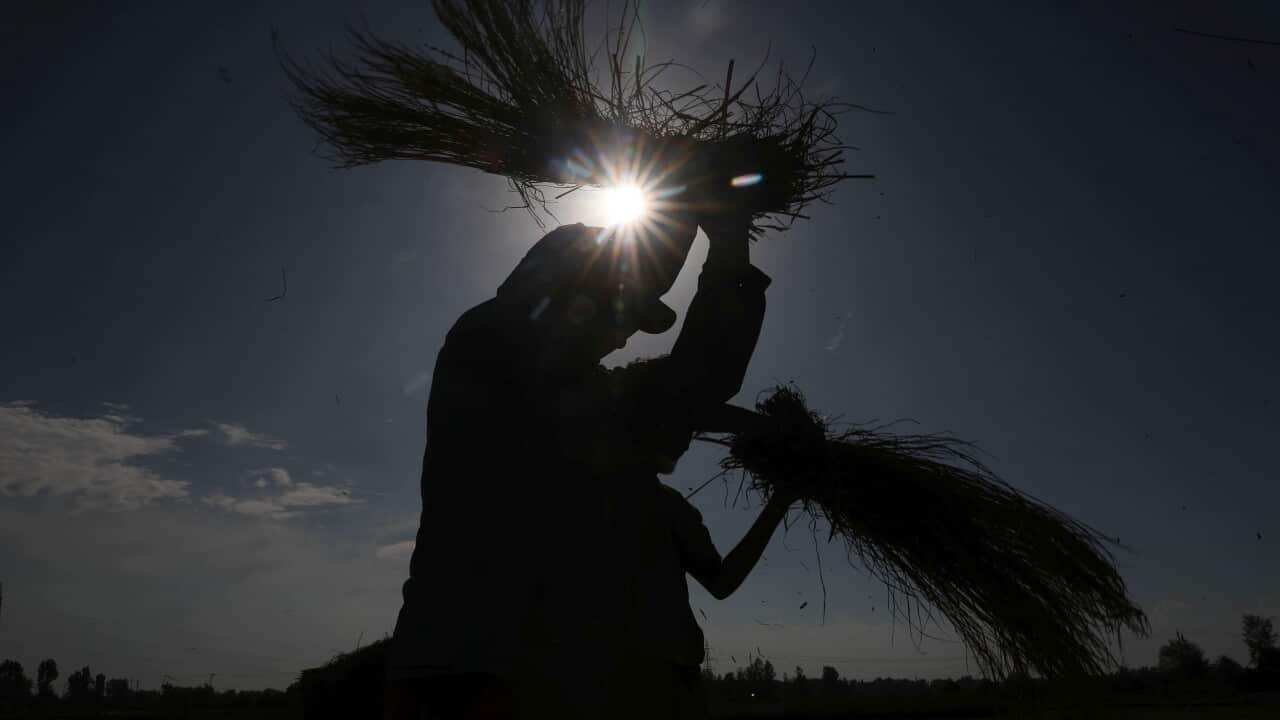Rice is a staple in many meals, in many countries, all around the world.
In July, India - the world's largest exporter of the grain - announced a ban on exports of non-basmati white rice.
The ban will roughly halve shipments of the grain, according to Reuters, triggering fears of further inflation in global food markets.
Here's what it could mean for Australia.
Why has India banned rice exports?
India's government said it was imposing a ban on non-basmati white rice after retail rice prices climbed 3 per cent in a month.
India accounts for more than 40 per cent of world rice exports, and low inventories with other exporters mean any cut in shipments could inflate food prices already driven up by Russia's invasion of Ukraine last year and erratic weather.
"In order to ensure adequate availability of non-basmati white rice in the Indian market and to allay the rise in prices in the domestic market, the government of India has amended the export policy," the food ministry said in a statement.
The statement cited an 11.5 per cent increase in retail prices over 12 months.
Indira Devi, emeritus professor at the Indian Council of Agricultural Research (Economics), said there are also concerns about the impacts of climate change on rice production and availability.
"Major rice-producing states in India have been impacted by the effects of climate change. Some areas are receiving too much rain while some are facing a shortage of rain," she said.
"Several studies point out that adverse effects of climate change could lead to shortage of food production. There is growing concern, particularly about shortage in rice production."
What does India's rice ban mean for Australia?
According to the Australian Bureau of Statistics, Australia imported $92.1 million worth of rice from India in the 2022-23 financial year.
Breakdowns of the types of rice Australia imports from India are not available.

India is the world's largest exporter of rice, but Australia is not a top importer. Source: SBS News
"Australia is not one of the top importers of non-basmati white rice from India," she said.
"Prices may increase speculatively but I do not anticipate any major impact on Australia."
What about the rest of the world?
Non-basmati white and broken rice accounted for around 9 million of a total 20 million tonnes of Indian rice exports last year.
India exports rice to more than 140 countries.
Key buyers of Indian non-basmati rice include Benin, Bangladesh, Angola, Cameroon, Djibouti, Guinea, Ivory Coast, Kenya and Nepal.
Ashar said the potential impacts on global markets were concerning.
But it is important to recognise the ban only applies to non-basmati raw rice, she said.
"This may lead to an increase in exports of both basmati and parboiled rice that some of the poorest nations import, which is in need of a bigger market," she said.
"India has also previously negotiated with countries for notes of credit and it is already in conversation with Singapore.
"So this may likely occur with some other nations that are heavily dependent on Indian non-basmati rice and experience food insecurity."
Ashar said countries in Africa and South East Asia are most likely to be affected by the ban but may be given an exception.

In July, India announced a ban on exports of non-white basmati rice. Source: SBS News / SBS Food
In July, the United Nations food agency's rice price index rose 2.8 per cent from the previous month, to its highest level in nearly 12 years.
The agency said prices in key exporting countries jumped on strong demand and India's move to curb exports.
When will India's rice ban be lifted?
The government has not announced an end date for the export ban.
India's rice stocks were at nearly three times its target at the start of August, according to Reuters.
Coupled with the new season crop that is due to start trickling into the market by October, the surplus will raise market hopes of the ban being lifted.
Devi said it is difficult to predict how long the ban will last due to the combination of factors.
''This is not a short-term problem, so it is not easy to predict when the restrictions will be lifted.''











